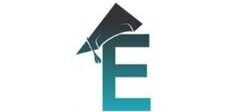The Certified Management Accountant (CMA) certification is one of the most prestigious credentials for professionals in the fields of management accounting and financial management. If you’re considering pursuing the CMA certification, this guide provides CMA course full details, covering everything from eligibility and exam structure to career benefits and preparation tips. Whether you’re a fresh graduate or an experienced professional, understanding the CMA course full details will help you make an informed decision about this career-enhancing credential.
What is the CMA Certification?
The CMA certification is a globally recognized credential offered by the Institute of Management Accountants (IMA). It is designed for professionals who want to specialize in management accounting, financial planning, and strategic decision-making. Unlike traditional accounting roles, the CMA focuses on forward-looking activities such as budgeting, forecasting, and performance management. By earning the CMA certification, you demonstrate your expertise in these areas, making you a valuable asset to organizations worldwide.
Eligibility Criteria for the CMA Course
Before diving into the CMA course full details, it’s important to understand the eligibility requirements. To enroll in the CMA program, you must meet the following criteria:
- Educational Qualification:
- A bachelor’s degree from an accredited university or college is required.
- Alternatively, a professional accounting certification (e.g., CPA, CA) is also acceptable.
- Work Experience:
- Candidates must complete two continuous years of professional experience in management accounting or financial management.
- This experience can be completed before or within seven years of passing the CMA exam.
- IMA Membership:
- To apply for the CMA exam, you must become a member of the Institute of Management Accountants (IMA).
CMA Exam Structure
The CMA exam is divided into two parts, each focusing on different aspects of management accounting. Here are the CMA course full details regarding the exam structure:
Part 1: Financial Planning, Performance, and Analytics
This section covers the following topics:
- External Financial Reporting Decisions
- Planning, Budgeting, and Forecasting
- Performance Management
- Cost Management
- Internal Controls
- Technology and Analytics
Part 2: Strategic Financial Management
This section focuses on:
- Financial Statement Analysis
- Corporate Finance
- Decision Analysis
- Risk Management
- Investment Decisions
- Professional Ethics
Each part consists of 100 multiple-choice questions and two essay questions. The exam is computer-based and must be completed within four hours per part.
CMA Exam Syllabus
To help you prepare effectively, here are the CMA course full details regarding the syllabus for both parts:
Part 1: Financial Planning, Performance, and Analytics (Weightage)
- External Financial Reporting Decisions (15%)
- Financial statements, recognition, measurement, and disclosure.
- Planning, Budgeting, and Forecasting (20%)
- Budgeting concepts, forecasting techniques, and profit planning.
- Performance Management (20%)
- Cost and variance measures, responsibility centers, and performance analysis.
- Cost Management (15%)
- Cost concepts, cost allocation, and overhead costs.
- Internal Controls (15%)
- Risk assessment, internal auditing, and governance.
- Technology and Analytics (15%)
- Information systems, data management, and data analytics.
Part 2: Strategic Financial Management (Weightage)
- Financial Statement Analysis (20%)
- Ratio analysis, liquidity, and profitability.
- Corporate Finance (20%)
- Capital structure, working capital, and risk management.
- Decision Analysis (25%)
- Cost-volume-profit analysis, pricing strategies, and marginal analysis.
- Risk Management (10%)
- Enterprise risk management and risk assessment.
- Investment Decisions (10%)
- Capital budgeting and discounted cash flow analysis.
- Professional Ethics (15%)
- Ethical considerations and corporate responsibility.
Benefits of the CMA Certification
Pursuing the CMA certification offers numerous career benefits. Here are the CMA course full details regarding the advantages:
- Global Recognition:
The CMA credential is recognized in over 100 countries, making it a globally portable certification. - Career Advancement:
CMAs are highly sought after for leadership roles such as Financial Controller, CFO, and Finance Manager. - Higher Earning Potential:
CMA-certified professionals earn significantly higher salaries compared to their non-certified peers. - Skill Development:
The CMA program equips you with advanced skills in financial planning, analysis, and strategic decision-making. - Networking Opportunities:
As an IMA member, you gain access to a global network of accounting and finance professionals.
CMA Exam Preparation Tips
Preparing for the CMA exam requires dedication and a well-structured study plan. Here are some tips to help you succeed:
- Understand the Exam Format:
Familiarize yourself with the exam structure, including the number of questions and time allocation. - Create a Study Schedule:
Allocate sufficient time for each topic and stick to your study plan. - Use Quality Study Materials:
Invest in comprehensive study guides, practice questions, and mock tests. - Focus on Weak Areas:
Identify your weak areas and dedicate extra time to improving them. - Practice Time Management:
Practice answering questions within the allotted time to improve your speed and accuracy. - Join Study Groups:
Collaborate with other CMA candidates to share knowledge and stay motivated.
CMA Certification Process
Here are the CMA course full details regarding the certification process:
- Enroll in the CMA Program:
Register for the CMA program through the IMA website. - Prepare for the Exam:
Study the syllabus thoroughly and take practice exams to assess your readiness. - Pass Both Parts of the Exam:
You must pass both Part 1 and Part 2 within three years of enrolling in the program. - Complete Work Experience:
Fulfill the two-year work experience requirement in management accounting or financial management. - Maintain the Certification:
After earning the CMA credential, you must complete 30 hours of continuing professional education (CPE) annually to maintain your certification.
Career Opportunities for CMA Professionals
The CMA certification opens doors to a wide range of career opportunities. Here are some roles you can pursue:
- Financial Analyst
- Management Accountant
- Financial Controller
- Chief Financial Officer (CFO)
- Cost Accountant
- Budget Analyst
- Risk Manager
- Consultant
Conclusion
The CMA certification is a powerful credential that can significantly enhance your career in management accounting and financial management. This guide provides CMA course full details, including eligibility, exam structure, syllabus, and career benefits. By understanding the requirements and preparing effectively, you can achieve the CMA designation and unlock new opportunities for professional growth. Whether you’re looking to advance your career, increase your earning potential, or gain global recognition, the CMA certification is a valuable investment in your future.




